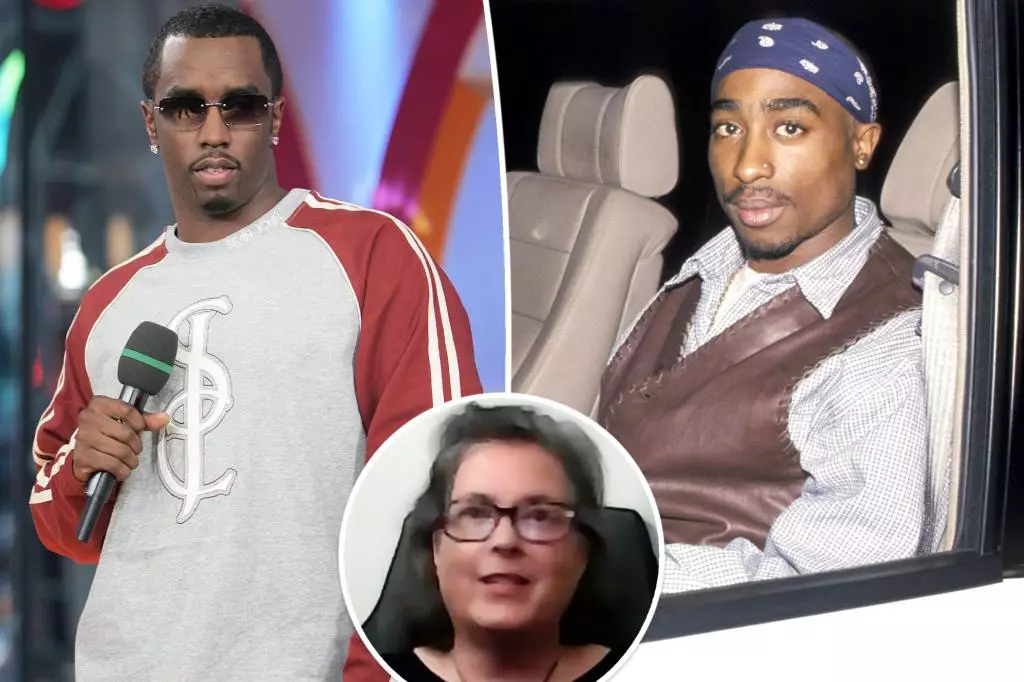The tragic narrative surrounding the death of Tupac Shakur is a complex tapestry woven with elements of fame, rivalry, and unsolved mysteries. As investigations into the events of that fateful night continue, the involvement of notable figures such as Sean “Diddy” Combs has come under increasing scrutiny. Sheryl McCollum, a crime scene investigator who has delved into Shakur’s case, has made compelling assertions regarding Diddy’s potential connection to the rapper’s murder in 1996, as well as to an earlier shooting incident in 1994.
To understand the gravity of McCollum’s claims, it is essential to first examine the 1994 shooting incident at Quad Studios in New York City. Tupac was shot multiple times during what was described by many as a robbery gone awry. At the time, Sean Combs was present with a large entourage, and remarkably, none of them were harmed during this violent incident. McCollum raises an important question: why was Tupac specifically targeted while Diddy and approximately 40 others came out unscathed? This anomaly fuels the narrative that Shakur’s shooting may have been orchestrated or facilitated by someone close to him.
Shakur explicitly accused his contemporaries, including Biggie Smalls and Combs, of complicity due to their nonchalant response upon his return to the studio post-shooting, a factor that raises eyebrows even decades later. The emotional response of an artist injured in a conflict seemingly involving others from the same circle cannot be understated. Tupac’s account of feeling ignored and abandoned provides context to an already fraught relationship marked by rivalry and competition.
The Drive-By Shooting: More Than Just Chance
Fast forward to 1996: Shakur was gunned down in a drive-by shooting after attending a boxing match in Las Vegas. This brutal act of violence ended the life of one of hip-hop’s brightest stars and left a lingering question mark over the circumstances leading to his untimely death. McCollum points out that both of these attacks left Shakur in vulnerable situations—trapped in an elevator during the Quad Studios shooting and in a car during the drive-by shooting.
The absence of video evidence from these critical events is striking. In an age where surveillance is ubiquitous, the lack of footage from the scenes creates a cloud of suspicion. McCollum’s assertion that someone with intimate knowledge of Shakur’s whereabouts must be involved significantly narrows the pool of suspects. This suggestion assumes that only a small circle of individuals could have orchestrated or even facilitated these attacks.
In a twist of fate, Shakur’s family is now contemplating a wrongful death lawsuit against Combs, bringing the specter of legal ramifications into this layered narrative. It has been revealed that insiders close to Diddy are alleged to be coming forward with information that may implicate him in Shakur’s death. These developments warrant a closer examination of the intricate bonds and rivalries that characterized the hip-hop scene of the 1990s.
The emergence of Duane “Keefe D” Davis, the individual currently charged with Tupac’s murder, adds further complexity. His statement suggesting a potential payout for Shakur’s assassination from Combs introduces a sinister dimension that cannot be overlooked. Given Diddy’s ongoing legal challenges related to charges of sex trafficking and racketeering, the juxtaposition of these two cases creates a volatile mixture that could lead to significant repercussions for him.
The saga of Tupac Shakur is as much a cultural narrative as it is a cautionary tale about the challenges and hazards faced by artists in the violent confines of fame. The persistent questions surrounding his death are symptomatic of a larger discourse about accountability, loyalty, and betrayal in the world of hip-hop. As investigators dig deeper and the legal battle unfolds, the truth about Tupac Shakur’s demise remains a ghostly whisper among his fans, waiting to be unleashed. With layers of intrigue continually being added to this story, one can only hope that justice will someday illuminate the dark shadows that linger over the legacy of a self-proclaimed revolutionary artist.

